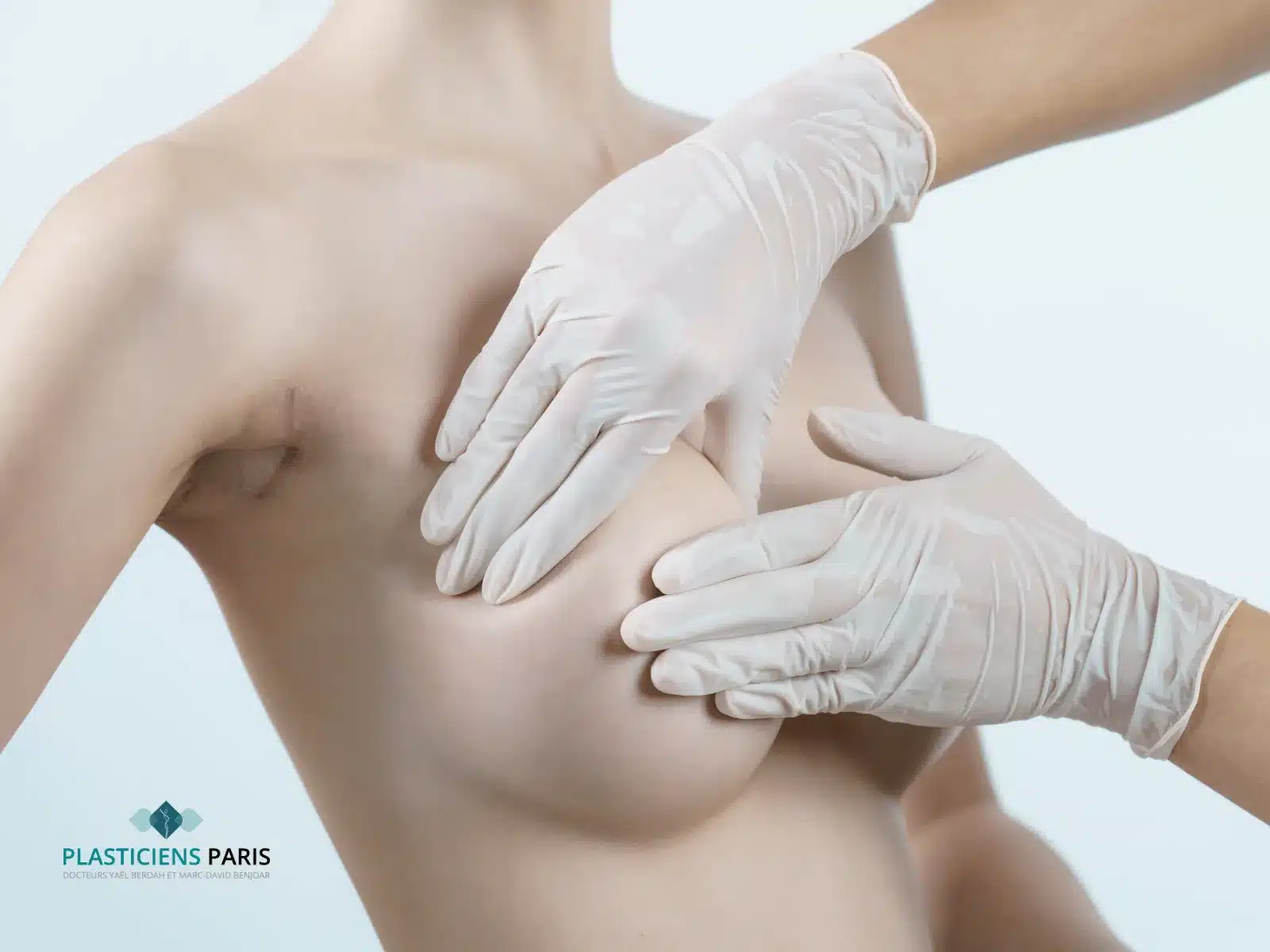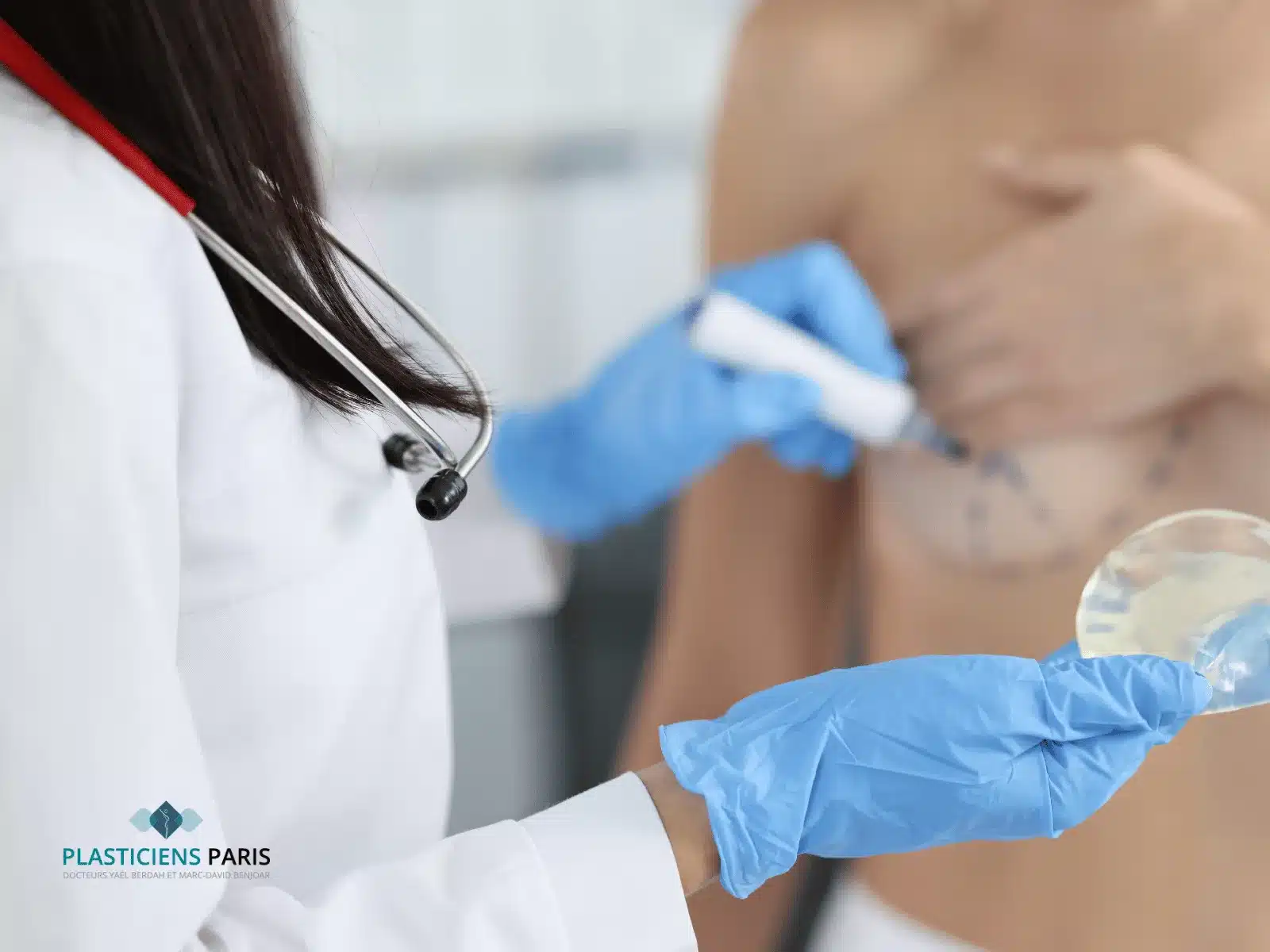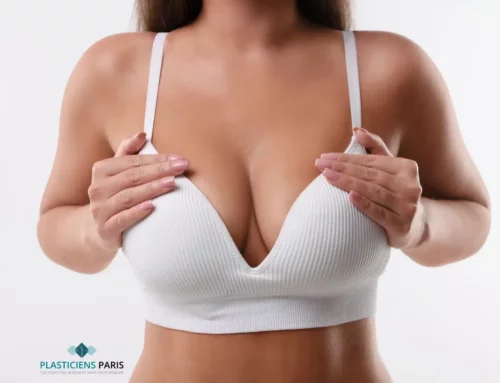
Pourquoi faire un changement de prothèses mammaires ?
Breast implants don't last forever. Barring any complications, breast implants have an average lifespan of 10 to 15 years, and sometimes even longer. But over time, certain factors or complications can make premature replacement necessary. Whether for medical or aesthetic reasons, regular follow-up is essential to monitor their condition and prevent any complications.
Breast prostheses can be replaced for a variety of reasons, including safety, comfort and changing aesthetic needs.
Breast implant replacement due to natural wear and aging
Les changements physiques peuvent également justifier le remplacement des prothèses mammaires. Des facteurs comme l’âge, les variations de poids ou une grossesse peuvent modifier la forme ou la taille des seins. Après une maternité, certaines femmes s’interrogent aussi sur la compatibilité entre allaitement et prothèse mammaire, même si cela ne nécessite pas systématiquement un remplacement d’implant. Il se peut que les prothèses ne correspondent plus aux attentes esthétiques ou au profil corporel de la patiente. Changer ses implants mammaires peut également être une démarche purement esthétique, pour améliorer l’apparence des seins ou pour ajuster leur taille. Par exemple, certaines femmes souhaitent des implants plus volumineux ou au contraire plus discrets. Le remplacement des implants peut ainsi répondre à de nouveaux objectifs en matière de silhouette.
Discover our article on breast augmentation.
Change of breast implant for aesthetic and personal reasons
Les changements physiques peuvent également justifier le remplacement des prothèses mammaires . Des facteurs comme l’âge, les variations de poids, ou une grossesse peuvent modifier la forme ou la taille des seins. Il se peut que les implants ne correspondent plus aux attentes esthétiques ou au profil corporel de la patiente. Changer ses prothèses mammaires peut également être une démarche purement esthétique, pour améliorer l’apparence des seins ou pour ajuster leur taille. Par exemple, certaines femmes souhaitent des implants plus volumineux ou au contraire plus discrets. Le remplacement des implants peut ainsi répondre à de nouveaux objectifs en matière de silhouette.
Découvrez notre article sur les prothèses mammaires ergonomiques ou rondes.
Changing breast implants for rare but possible complications: capsulitis
Rare complications can occur after breast implant surgery. One of the most common is shell formation, also known as capsulitis. This is a reaction of the body that creates excess scar tissue around the implant, which can lead to pain, deformity and rigidity of the breast. This can make the implant painful and deformed, and, in some cases, require replacement. If capsulitis becomes particularly troublesome, implant replacement may be an option. Implant rupture, visible folds under the skin or loss of shape can also be signs that it's time to change prostheses. In these situations, it may also be necessary to treat the resulting complications.

Changing breast implants: warning signs
Breast prosthesis change: pain, fragility or deformation as warning signals
Plusieurs signes peuvent alerter sur le fait qu’un changement devient inévitable : douleurs anormales, déformation des seins, ou signes visibles de fragilité des implants. La rupture d’un implant est un signal direct qu’un remplacement est nécessaire. Si ces symptômes apparaissent, il est vivement recommandé de consulter un chirurgien afin d’évaluer l’état des implants et décider si une intervention chirurgicale s’impose. Un suivi médical régulier après la chirurgie initiale d’augmentation mammaire par prothèse permet de surveiller leur état et de détecter rapidement toute complication. Les examens d’imagerie permettent de repérer ces problèmes de manière précoce et d’éviter des complications graves.
Breast implant replacement surgery
Le remplacement des prothèses mammaires se fait généralement par les mêmes incisions utilisées lors de la première intervention. Cela permet de minimiser les cicatrices et d’obtenir un résultat esthétique très satisfaisant. En fonction des désirs esthétiques ou des préoccupations médicales de la patiente, il est possible de choisir de nouveaux implants, souvent de dernière génération, offrant des avantages tels qu’une meilleure durabilité et un aspect plus naturel. Si la patiente présente des complications comme la capsulite, le remplacement des implants s’accompagne d’une révision de la poche qui les contient. Cette intervention permet d’éliminer l’excès de tissu cicatriciel (capsulectomie) et de traiter les éventuelles complications avant de mettre en place les nouveaux implants. Un lifting mammaire ou cure ptose peut compléter l’opération pour des résultats optimaux, on parle alors de plastie-prothèses. En fin d’intervention, le praticien suture les incisions et met en place un pansement compressif. La convalescence est souvent plus simple que pour la première intervention.
Breast prosthesis replacement Price: how much does it cost?
Le prix d’un remplacement de prothèse mammaire peut varier en fonction de plusieurs facteurs : le type d’implants, les frais chirurgicaux, la complexité de l’opération et les options choisies. En général le tarif de cette intervention varie de 6500 à 8500 euros.
See also our article to find out more about the price of breast augmentation by prosthesis.
Change of breast prosthesis reimbursed
Une prise en charge par la Sécurité sociale d’un changement de prothèse mammaire peut être envisagée si l’intervention est réalisée pour des raisons médicales et que la pose initiale des implants était prise en charge. Si le remplacement des prothèses mammaires est médicalement justifié, une entente préalable avec la Sécurité sociale est nécessaire pour valider le remboursement. Le chirurgien doit fournir un dossier médical détaillant la nécessité de l’intervention. A noter que les honoraires complémentaires chirurgicaux et d’anesthésie restent à la charge de la patiente et peuvent être soumis à sa mutuelle ou complémentaire santé. Si l’intervention est purement esthétique, elle ne sera pas remboursée par l’assurance maladie.
Discover our article on saline breast implants.




